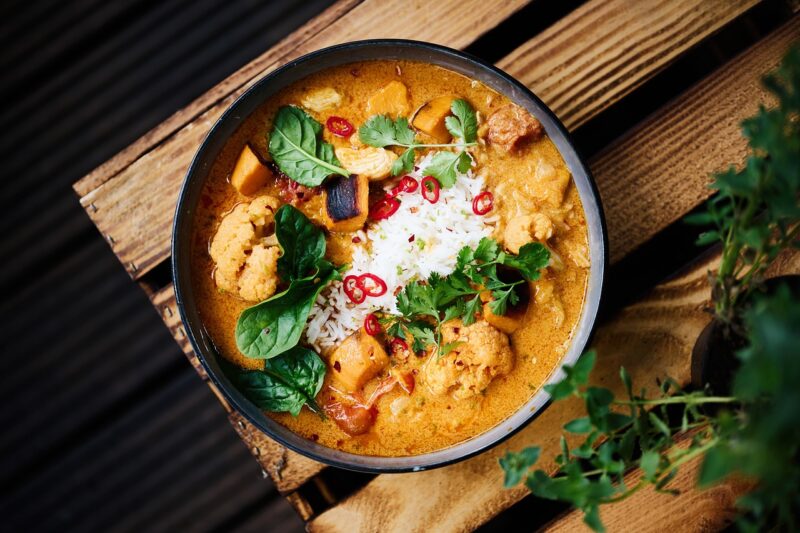From Bird’s Nest Soup to Frog Smoothies: The Strangest Foods in Asia
November 13, 2024

Asia is a continent known for its diverse cultures, beautiful landscapes, and, most intriguingly, its unusual cuisines. The culinary landscape in Asia is as vast as it is varied, featuring ingredients and dishes that may seem strange, bewildering, or even unappetizing to the uninitiated. From exotic delicacies prepared in bustling street markets to age-old recipes cherished by local communities, the continent offers a banquet of flavors that challenge traditional notions of what food should be. In this article, we will explore some of the most peculiar foods across different Asian countries, giving you insight into the stories behind them and the cultural significance they hold.
1. Bird’s Nest Soup: The Delicacy from the Skies
Bird’s Nest Soup is perhaps one of the most infamous exotic dishes hailing from Asia, especially beloved in China. Made from the nests of the edible-nest swiftlet, this soup has tantalized the palates of gourmets for centuries. The nests are composed of the birds’ saliva, solidified into a hard form that is laboriously harvested from steep caves.
The preparation process involves soaking the nests in water for several hours to rehydrate them before they are cooked. The end product is a translucent, gelatinous soup with a subtle flavor—a hallmark of traditional Chinese medicine believed to boost health and longevity. Bird’s Nest Soup is considered so luxurious that it is often served on special occasions, such as weddings or festive celebrations, and can cost upwards of $100 per bowl.
2. Century Eggs: A Preserved Treat
Another prominent delicacy in China is the Century Egg, also known as hundred-year egg. This dish is made by preserving duck, chicken, or quail eggs in a mixture of clay, ash, quicklime, and salt for several weeks to months. The result is an egg with a creamy, dark green yolk and a translucent black or dark brown albumen.
To many, Century Eggs may appear daunting due to their peculiar appearance, but they are a staple in Chinese cuisine and are often eaten with congee or used in salads and stir-fries. The unique flavor, reminiscent of earthy umami, has won over countless enthusiasts, proving that sometimes the strangest foods lead to surprisingly delicious outcomes.
3. Frog Smoothies: A Health Craze in Southeast Asia
Frog Smoothies might sound like something straight out of a fantasy film, but they are an actual health trend in certain parts of Southeast Asia, including Thailand and Vietnam. Made using fresh frog meat blended with various fruits and vegetables, these smoothies are believed to possess numerous health benefits, purportedly improving stamina and vitality.
Typically, the frog legs are skinned and blended with ingredients like bananas, spinach, and honey, creating a nutritious drink that caters to health-conscious individuals. Despite their unusual nature, Frog Smoothies are gaining popularity among adventurous foodies who are keen to try something out of the ordinary.
4. Durian: The King of Fruits
Known as the King of Fruits, Durian is famed for its strong aroma and unique taste. Found predominantly in Southeast Asia, particularly Malaysia and Thailand, durian has gained a polarized reputation; you either love it or hate it. Its pungent odor has earned it the nickname “stinking fruit,” leading to its ban on public transport and in many hotels across the region.
The flesh of the durian, which ranges in flavor from sweet and custard-like to savory and creamy, is a local delicacy and is often used in desserts, ice creams, and pastries. For many, indulging in durian is a rite of passage; it embodies the rich, bold flavors that can be found only in Asia’s extraordinary markets.
5. Insects: A Crispy Protein Source
Across many Asian countries, including Thailand, Cambodia, and Laos, edible insects are a common culinary staple. From crickets and grasshoppers to mealworms and silkworms, these critters are fried, roasted, or flavored with spices and served as snacks.
Entomophagy, the consumption of insects, offers a sustainable protein alternative in regions where food security is a concern. Fried crickets are celebrated for their crunch and are often seasoned with chili or soy sauce. Insects are not only found in local markets but are also becoming intriguingly popular in gourmet restaurants, where chefs creatively incorporate them into gourmet recipes.
6. Sannakji: Live Octopus Delight
In South Korea, one of the most daring dishes to try is Sannakji, which features live octopus cut into small pieces and lightly seasoned with sesame oil. Served immediately, the squirming tentacles provide a unique sensory experience, as they still move on the plate, drawing reactions from unsuspecting diners.
The dish is often garnished with sesame seeds and enjoyed with a dipping sauce. Sannakji is not just about the thrill of its presentation; this delicacy provides a fresh and chewy texture that truly immerses diners in the culinary adventure of eating on the edge.
7. Natto: Fermented Soybeans
Originating from Japan, Natto is made from fermented soybeans that undergo a special fermentation process. The resulting product has a strong smell, a sticky texture, and a unique, bold flavor that may leave first-time tasters hesitating.
Devotees praise natto for its health benefits, claiming it aids digestion and boosts cardiovascular health. It’s commonly eaten at breakfast with rice or used as a topping for sushi. Interestingly, while natto is considered a superfood in Japan, it’s often labeled as one of the country’s strangest foods by outsiders.
8. Fried Tarantulas: A Part of Cambodian Culture
In Cambodia, fried tarantulas are a beloved street food, particularly in the town of Skuon, also referred to as “Spiderville.” Local sellers use simple frying techniques, coating the spiders with salt and garlic, producing crispy, flavorful bites that draw the interest of both locals and adventurous tourists.
Eating fried tarantulas is not merely about trying something strange; it reflects a much larger cultural trend of using available resources for sustenance, especially during periods of famine. Tarantulas are an easy protein source, and their popularity serves as a testament to Cambodia’s rich culinary heritage.
Conclusion: Embracing the Unusual
Exploring Asia’s culinary landscape is not just about tasting new flavors; it is about experiencing diverse cultures and traditions that weave into the fabric of everyday life. The strangest foods, from Bird’s Nest Soup to Fried Tarantulas, are a reminder of the rich history and unique characteristics of the continent’s inhabitants.
If you find yourself in Asia, don’t shy away from indulging in these peculiar dishes. Instead, embrace the culinary adventure that awaits, as each taste tells a story steeped in tradition and cultural significance. From the unfamiliar to the unusual, Asia serves a feast that promises to surprise even the most adventurous palate.







